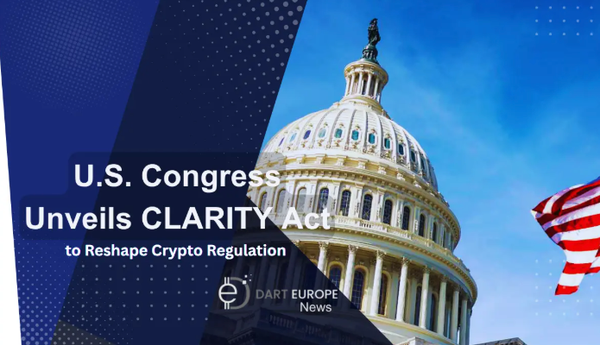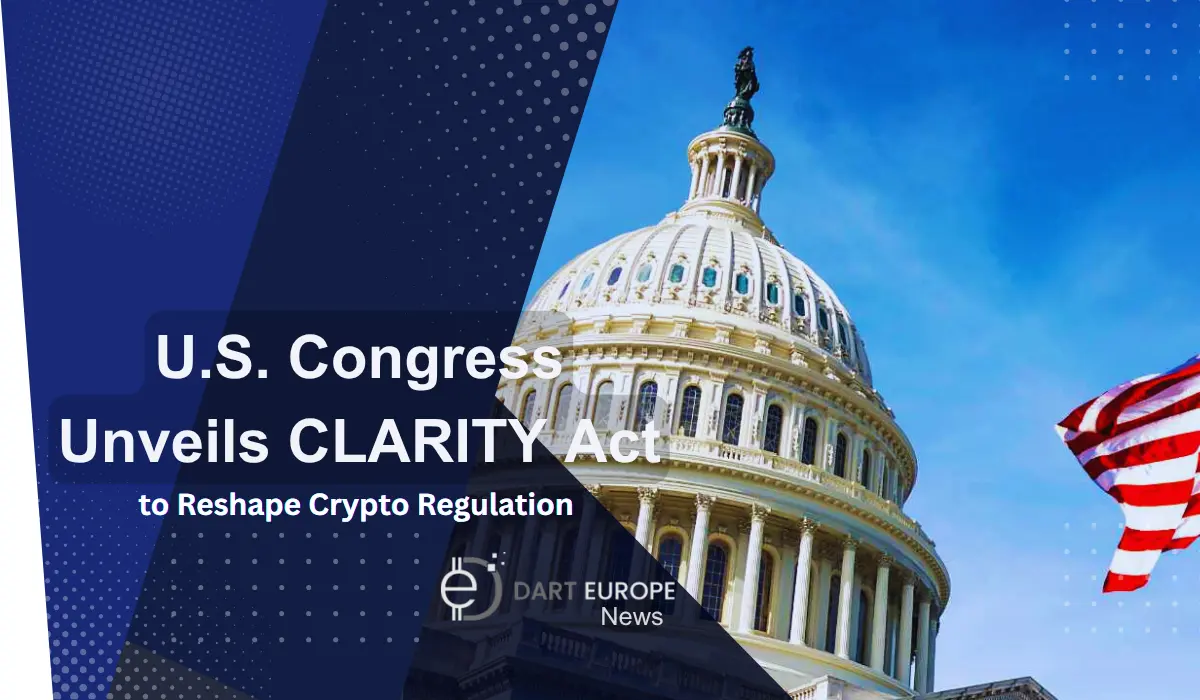CLARITY Act: Potential Shift in Digital Asset Classification Sparks Blockchain Growth Concerns




Digital Asset CLARITY Act: Comprehensive Analysis
The introduction of the Digital Asset Market Clarity (CLARITY) Act marks a pivotal shift in the landscape of digital asset regulation within the United States .

The bill emerges from genuine intentions to create regulatory clarity, yet it introduces fascinating complexities that will reshape how digital assets are classified, regulated, and developed. As stakeholders across the digital asset ecosystem examine this legislation, it becomes clear that the CLARITY Act will fundamentally alter the strategic considerations for developers, investors, and market participants alike. The proposed framework attempts to balance innovation with regulation through a delicate dance filled with exemptions, caveats, and nuanced definitions that acknowledge the dynamic nature of the crypto realm.
A remarkable shift occurs within the proposed regulatory structure, as the legislation designates the Commodity Futures Trading Commission (CFTC) as the primary supervisory authority for digital assets, working in essential collaboration with the Securities Exchange Commission (SEC). This change significantly augments the CFTC's role beyond its traditional domain of derivatives and commodities, aligning it with the contemporary demands of the digital asset realm, which has attracted substantial retail investor participation.
Historically, the CFTC has been engaged in overseeing derivatives and commodities, with consumer-focused regulations not being central to its mandate. However, as digital assets continue to attract significant retail investment, the CFTC's role evolves to embrace this burgeoning sector. The SEC remains a pivotal partner in implementing rulemaking, playing a crucial role in delineating the intricacies of digital asset regulations. With the landscape of digital commodities being refined, the SEC's input ensures a balanced approach to security regulations and guidelines, particularly as distinctions emerge between commodities and securities.
This collaborative approach between the two regulatory bodies represents an acknowledgment that the digital asset ecosystem requires nuanced oversight that draws from both agencies' expertise. The partnership aims to create a structured trading environment while ensuring that the regulatory framework can adapt to the rapidly evolving nature of digital assets and blockchain technology.
Central to the CLARITY Act is its approach to defining digital commodities, viewed through the lens of their connection to blockchain networks. The legislation specifically identifies a digital commodity as a token intimately linked to a blockchain network, creating a regulatory dichotomy that has far-reaching implications for the industry. As a result, assets like utility tokens not closely tied to such networks may find themselves classified as securities, steering them toward potentially stricter regulatory scrutiny.
This classification system creates an intriguing dynamic where non-native tokens—those digital assets that forge their paths without the support of a dedicated blockchain network—might find themselves rebranded as securities. The reclassification stems from the Act's stipulation that digital commodities must be closely tied to a blockchain network, casting the spotlight on projects eager to avoid the heavier hand of securities regulation.
The definition of a digital commodity notably excludes various financial entities and instruments, ranging from securities to stablecoins and commodities derivatives. The bill strives to clarify this landscape by distinguishing between digital assets and investment contracts—a vital criterion in securities law bolstered by the notorious Howey test. The legislation derives its foundation from this infamous test, striving to delineate between digital assets as commodities versus investment contracts.
The legislative effort delves deeply into defining what constitutes an investment contract versus handling individual transactions within the crypto sphere. By redefining the "investment contract" to exclude "investment contract assets," the Act attempts to clear murky waters around securities law applicability. This distinction represents a sophisticated legal framework that acknowledges the unique characteristics of digital assets while providing clearer guidance for market participants.
Notably, the legislation differentiates "investment contract assets" from being classified under traditional securities laws, yet acknowledges that particular transactions might still attract securities law considerations. This nuanced approach recognizes that while certain digital assets may not inherently be securities, specific transactions involving these assets could still fall under securities regulations depending on the circumstances and structure of the transaction.
Exemptions within the bill favor established blockchain systems, provided they meet specific criteria such as age and token distribution boundaries, alongside ensuring protection for US-based issuers. These exemptions are particularly intricate, tied to the blockchain's maturity and economic thresholds, further establishing the United States as a hub for regulatory nuances in the digital asset space.
An intriguing ramification of this classification system is its potential to spur a bloom of blockchain technology development. With digital commodities subject to lighter regulations compared to securities, utility protocol operators might be driven to develop their own blockchain networks, possibly causing an explosion of new platforms. However, this trend introduces the risk of fragmentation and poses additional security challenges that the industry must carefully navigate.
The allure of the lighter regulatory touch reserved for digital commodities signals a potential explosion in the number of blockchains, fragmenting the ecosystem and introducing novel security challenges. Such moves could produce zombie blockchains—platforms arising from merely regulatory maneuvering rather than genuine business growth or technological innovation. This potential loophole exists where utility protocols could spawn blockchains purely for regulatory benefits, increasing the chances of platforms with little to no use or adoption.
However, not all blockchain expansions stem from regulatory considerations. High-profile projects like Uniswap and Ondo Finance have embarked on blockchain creations as part of genuine business strategies rather than pure regulatory incentives. These companies exemplify how enterprises can venture into blockchain expansions, merging sound business strategies with regulatory compliance in meaningful ways that drive actual innovation and utility.
The CLARITY Act mandates registration of digital commodity brokers and various digital market participants with the CFTC, ensuring a structured and supervised trading environment. This requirement represents a significant step toward formalizing the digital asset marketplace and bringing it under established regulatory oversight. The registration process aims to ensure that market participants meet certain standards and comply with regulatory requirements designed to protect consumers and maintain market integrity.
As the landscape navigates through these regulatory changes, the Act empowers investors with the right to independently manage their assets through self-custody arrangements. This provision represents an admirable effort toward autonomy and investor empowerment, recognizing the fundamental principle of digital asset ownership that many in the crypto community hold dear. The right to self-custody assets has become an increasingly important aspect in digital finance, as it allows investors to maintain direct control over their holdings rather than relying solely on third-party custodians.
These investor protections balance the need for regulatory oversight with the preservation of the decentralized ethos that underlies much of the digital asset ecosystem. By allowing self-custody while implementing registration requirements for market participants, the legislation attempts to create a framework that protects consumers without unnecessarily restricting the innovative potential of digital assets.
The journey of the CLARITY Act continues to unfold, with eager eyes remaining fixated on this landmark legislation and its potential impact on the digital asset landscape. A watchful gaze follows its execution and evolution within the ever-shifting sands of digital asset regulation, as stakeholders across the industry prepare for the fundamental changes it may bring.
By potentially classifying certain tokens as securities and pushing projects toward lighter-regulated digital commodities, the legislation could unintentionally drive an increase in new blockchain creations. This consequence, while potentially beneficial for innovation, demands careful monitoring to prevent regulatory arbitrage while ensuring robust, secure digital ecosystems. The challenge lies in fostering genuine innovation while preventing the creation of blockchain networks that exist solely to navigate regulatory requirements.
The horizon of digital innovation glimmers with possibilities, underscored by an exciting and perhaps complex regulatory journey ahead. Operators, investors, and enthusiasts alike may soon find themselves needing to reevaluate their strategies in the wake of this legislative development. As the regulatory landscape for digital assets continues to evolve, monitoring the dynamic interplay between the CFTC and SEC will be invaluable for stakeholders throughout the digital asset sector.
The CLARITY Act represents a significant leap toward regulatory precision, setting a stage for balanced growth and innovation in the American digital asset market. While the legislation addresses many long-standing concerns about regulatory uncertainty, it also introduces new considerations and potential challenges that the industry must navigate thoughtfully. The success of this regulatory framework will ultimately depend on its implementation and the industry's ability to adapt while maintaining the innovative spirit that has driven the digital asset revolution.
https://www.congress.gov/bill/119th-congress/house-bill/3633
Comments